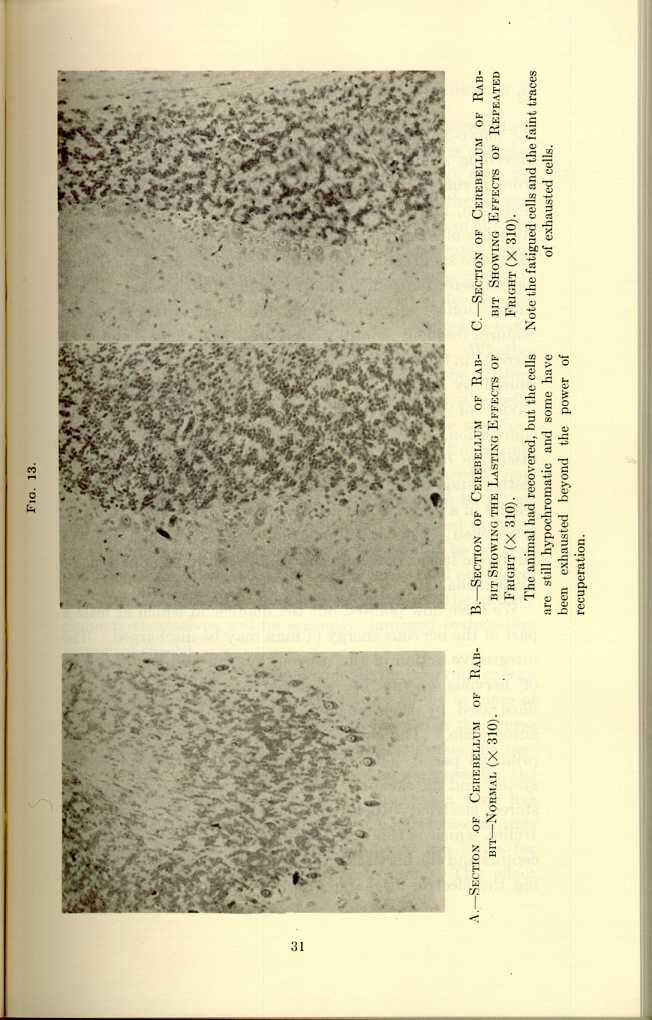| The Origin and Nature of the Emotions: Miscellaneous Papers | ||
Summation
In the discharge of energy, summation plays an important rôle. Summation is attained by the repetition of stimuli at such a rate that each succeeding stimulus is applied before

FIG. 13.
A.—Section of Cerebellum of Rabbit—Normal (x310).
B.—Section of Cerebellum of Rabbit Showing the Lasting Effects of
Fright (x310).[k]
C.—Section of Cerebellum of Rabbit Showing Effects of Repeated Fright
(x310).[l]
[Description: Black-and-white photographs of cerebellum of rabbits under
various conditions.]
We have now pointed out the manner in which at least a part of the nervous energy of man may be discharged. The integrative action of the nervous system and the discharge of nervous energy by phylogenetic association may be illustrated by their analogy to the action of an electric automobile. The electric automobile is composed of four principal parts: The motor and the wheels (the muscular system and the skeleton); the cells of the battery containing stored electricity (brain-cells, nervous energy); the controller, which is connected with the cells by wiring (the receptors and the nerve-fibers); and an accelerator for increasing the electric discharge (thyroid gland?). The machine
We have now presented some evidence that nervous energy is discharged by the adequate stimulation of one or more of the various receptors that have been developed in the course of evolution. In response to an adequate stimulus, the nervous system is integrated for a specific purpose by the stimulated receptor, and but one stimulus at a time has possession of the final common path—the nerve mechanisms for action. The most numerous receptors are those for harmful contact; these are the nociceptors. The effect
With this conception, the human body may be likened to a musical instrument—an organ—the keyboard of which is composed of the various receptors, upon which environment plays the many tunes of life; and written within ourselves in symbolic language is the history of our evolution. The skin may be the "Rosetta Stone" which furnishes the key.
| The Origin and Nature of the Emotions: Miscellaneous Papers | ||